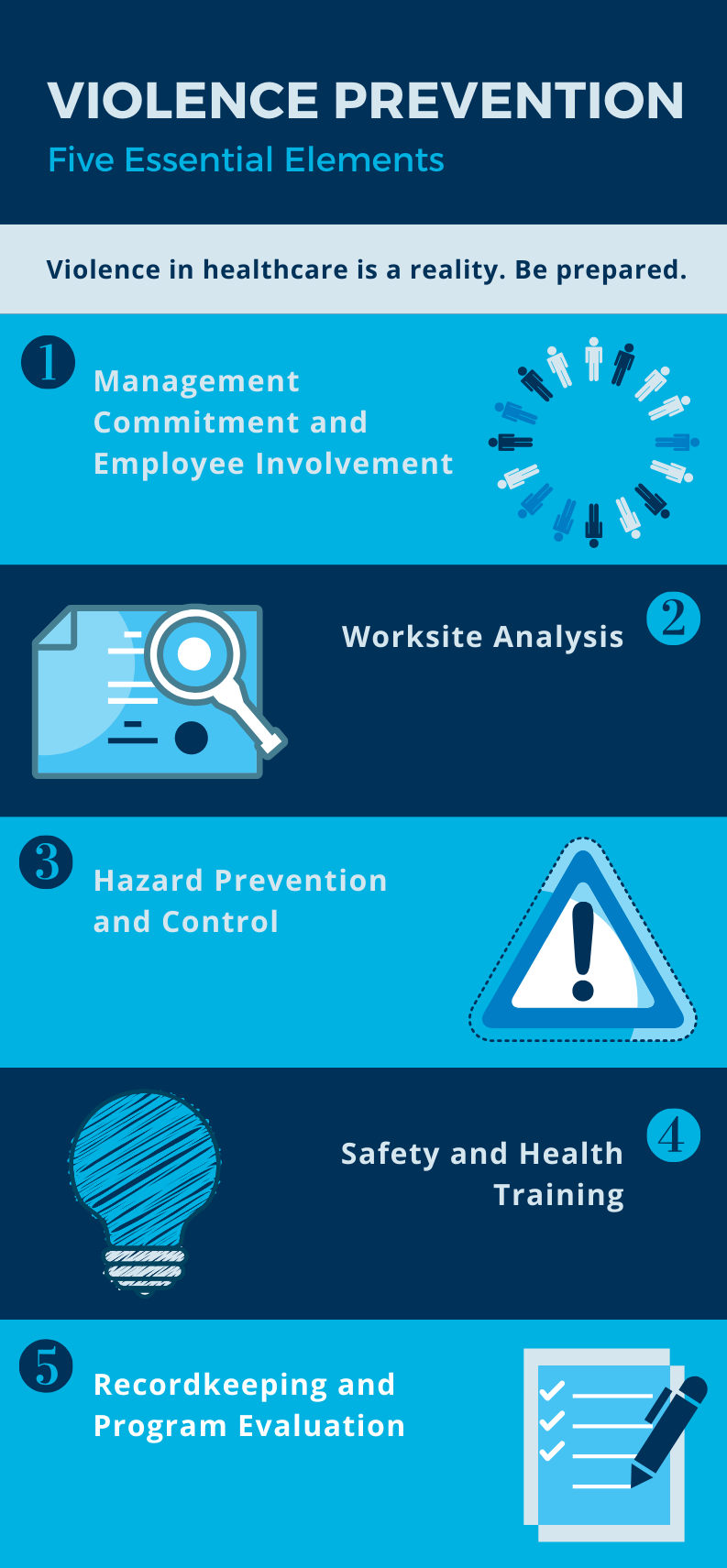Innovative Tools and Resources for California Workplace Violence Prevention Success
Innovative Tools and Resources for California Workplace Violence Prevention Success
Blog Article
The Function of Employee Training and Recognition in Enhancing Office Violence Prevention Initiatives Across Different Industries
The integration of staff member training and understanding right into work environment physical violence prevention initiatives is significantly acknowledged as a basic aspect of business security across diverse sectors. By executing targeted training programs, businesses can efficiently empower their workforce to identify and resolve possible threats before they rise. The efficiency of these efforts frequently pivots on several essential aspects that vary by market, increasing important concerns regarding the flexibility of training approaches and their real-world influence. Recognizing these subtleties might reveal strategies that can substantially boost safety and security methods and employee confidence in high-risk environments.
Significance of Training Programs
In today's vibrant work atmosphere, the value of training programs can not be overemphasized, particularly in the context of work environment physical violence prevention. These programs function as a foundational aspect in cultivating a safe and protected work environment society. By gearing up employees with the expertise and skills necessary to determine, minimize, and respond to prospective risks, organizations can promote an atmosphere that prioritizes safety and health.
Efficient training programs do greater than simply instruct; they empower workers to identify warning signs of violence, understand the protocols for reporting incidents, and develop strategies to de-escalate possible disputes. They infuse a sense of cumulative duty amongst team, motivating proactive participation in preserving a safe work environment.
Investment in training not just boosts worker understanding but additionally demonstrates a company's commitment to protecting its labor force. This positive strategy can lead to minimized incidents of work environment physical violence, reduced absence, and enhanced worker spirits. Inevitably, comprehensive training programs are important to establishing a resilient business culture that values safety and security and promotes a healthy job environment, therefore lowering the risk of physical violence and its connected effects.
Trick Components of Effective Awareness
A thorough awareness program includes a number of crucial components that are necessary for efficiently avoiding work environment physical violence. Initially, clear communication of plans and treatments related to work environment violence is crucial. Employees should be notified regarding the company's stance on physical violence and the particular protocols in area for reporting events.
2nd, training sessions must integrate realistic circumstances that workers might run into. This functional strategy helps staff members acknowledge alerting indications of potential physical violence and outfits them with the necessary skills to de-escalate strained circumstances. Third, fostering an encouraging work environment culture is important; workers need to feel empowered to speak up without concern of revenge.
Integrating comments mechanisms permits staff members to share their experiences and understandings, which can lead to constant renovation of recognition campaigns. By integrating these parts, organizations can develop a durable framework for stopping workplace physical violence, ultimately contributing to a more secure and more productive atmosphere for all staff members (california workplace violence prevention).
Industry-Specific Training Methods
Effective work environment violence prevention training need to be tailored to the unique difficulties and dangers encountered by specific markets. Medical care settings call for training that attends to the high likelihood of experiences with hostile individuals or visitors. Programs need to concentrate on de-escalation techniques, acknowledging caution click to read more signs of possible physical violence, and ensuring personnel understand the value of reporting occurrences.
On the other hand, retail settings may encounter different threats, such as burglary or client disputes. Training in these atmospheres need to emphasize situational awareness, reaction methods throughout emergencies, and the relevance of securing cash and prized possessions.
Manufacturing and building industries present their own threats, commonly connected with interpersonal conflicts or dangerous working problems. Training in these industries must consist of approaches for problem resolution, promoting a culture of safety, and encouraging open communication among employees.
Moreover, company offices may call for training centered on preventing harassment and intimidation, fostering a considerate workplace culture, and carrying out clear reporting systems. Each sector should not just recognize its details susceptabilities but likewise adjust training products to resonate with the labor force successfully, making certain that employees really feel complete and encouraged to take care of prospective terrible scenarios.
Measuring Educating Effectiveness
Reviewing the effect of work environment physical violence avoidance training is vital for ensuring that staff members are sufficiently prepared to manage potential risks. To accurately measure training effectiveness, companies need to check these guys out execute both qualitative and measurable analysis methods. Pre- and post-training surveys can determine modifications in employee expertise, perspectives, and actions concerning workplace violence. These studies must focus on certain training purposes to make sure alignment with the company's goals.
Furthermore, functional assessments, such as role-playing scenarios or simulations, can provide insights right into exactly how well employees apply found out abilities in real-life circumstances. Keeping an eye on case reports prior to and after training can also function as a sign of efficiency, as a reduction in occurrences might mirror improved worker preparedness.
In addition, feedback from individuals should be systematically gathered to determine areas for improvement in training content and delivery. Performing follow-up analyses at regular periods helps endure understanding and strengthens training concepts with time - california workplace violence prevention. By employing a comprehensive approach to gauging training performance, companies can ensure that their workplace violence avoidance initiatives promote a more secure setting and improve overall employee well-being
Structure a Culture of Safety

Educating plays a crucial duty in this social change. Normal, detailed training sessions inform staff members concerning acknowledging indication of workplace physical violence and the ideal responses. Motivating open communication permits employees to voice problems without fear of vengeance, promoting collective duty for safety and security.
Additionally, incorporating safety and security right into day-to-day operations guarantees that it comes to be a common value as opposed to a simple conformity concern. This consists of routine security drills, updates on policies, and feedback mechanisms that entail staff members in safety and security conversations and improvements.
Inevitably, a robust culture of safety not only reduces the risks of work environment violence however also boosts worker spirits and productivity. By promoting an environment where safety and security is a basic concern, companies can develop resilient offices that support both individual wellness and collective success.
Verdict
In final thought, staff member training and recognition are vital components in the avoidance of work environment violence throughout different sectors. Reliable training programs, tailored to details industry needs, improve employees' capacity to respond and acknowledge to potential risks.

Regular, comprehensive training sessions enlighten workers about identifying caution indications of work environment physical violence and the proper responses.In conclusion, employee training and understanding are crucial parts in the prevention of work environment physical violence across various sectors.
Report this page